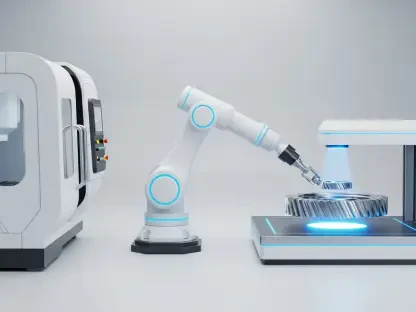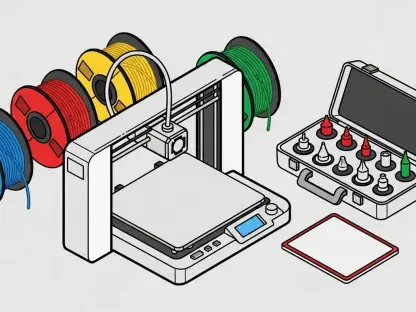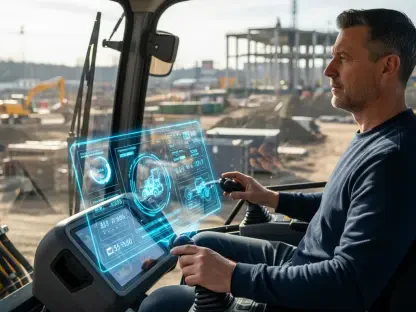Digital transformation is having a profound impact on all sectors, and the defense industry is no exception. The modernization of acquisition processes in the Defense Department is a crucial component of staying competitive in today’s rapidly evolving global landscape. This transformation relies heavily on advanced digital technologies such as model-based systems engineering (MBSE), digital twins, and generative artificial intelligence (AI), which collectively aim to enhance the efficiency, interoperability, and capability of defense systems against contemporary peer competition.
The Evolution of Digital Transformation in Defense
The journey of digital transformation within the Defense Department began in the 1980s with the introduction of computer-aided design (CAD) and manufacturing. This marked the initial phase of requiring digital deliverables, slowly revolutionizing traditional processes. Over the years, advancements in technology have simplified numerous complex tasks, turning them into everyday activities.
Today, the defense sector stands at a critical juncture, poised to leverage cutting-edge technologies that can significantly enhance the efficiency, interoperability, and capabilities of defense systems. The Defense Department’s push towards digital transformation is not merely a technological upgrade but a strategic move to maintain a competitive edge in the face of contemporary peer competition.
As digital transformation continues to evolve, the Defense Department remains committed to adopting and integrating new technologies. This ongoing effort underscores the crucial role that digitalization plays in modernizing defense acquisition processes, ensuring that the department is well-prepared to tackle current and future challenges. By embracing digital transformation, the Defense Department aims to build a more robust, adaptive, and responsive acquisition framework that can effectively support the nation’s defense objectives.
Contemporary Digital Technologies: The Game Changers
Advanced digital technologies are redefining how the Defense Department approaches acquisitions. Three primary technologies—MBSE, digital twins, and generative AI—are at the forefront of this shift, each bringing unique capabilities that are instrumental in transforming defense systems and processes.
Model-Based Systems Engineering (MBSE) is a comprehensive approach that utilizes models to streamline design, analysis, verification, and validation activities from the conceptual design phase throughout the product lifecycle. By replacing traditional document-based methods with detailed models, MBSE offers a more efficient and coherent way to manage complex defense systems, enhancing both the speed and accuracy of development efforts.
Digital twins offer virtual replicas of physical systems, enabling real-time monitoring and simulation. This technology enhances decision-making processes by providing a detailed, dynamic view of operations, which is crucial for maintaining the performance and reliability of defense systems. Digital twins can predict potential issues and facilitate preemptive maintenance, thereby reducing downtime and extending the lifecycle of defense assets.
Generative AI employs sophisticated algorithms to autonomously design complex systems and components. The result is accelerated timelines and improved efficiency in developing new defense technologies. Generative AI not only improves the speed of the design process but also optimizes it by exploring a broader range of design possibilities, ensuring that defense systems are both innovative and effective.
Defense Department Policies and Directives: Steering the Digital Shift
Several policies and directives have been implemented to drive digital transformation within the Defense Department. These initiatives are designed to ensure that the integration of advanced technologies is systematic, efficient, and aligns with the broader goals of the department.
DoD Instruction 5000.97 (2023) mandates the adoption of digital engineering methodologies across the lifecycle of defense acquisition programs. This directive emphasizes the creation of digital engineering ecosystems and integrating MBSE tools and data analytics, facilitating a more cohesive and dynamic approach to system development and management. By standardizing digital practices, the directive aims to enhance collaboration and interoperability across different components of the Defense Department.
The Army Directive 2024-03 focuses on establishing digital engineering areas, pathfinder programs, and workforce development initiatives. This directive is aligned with the broader departmental goals, aiming to build a robust framework that supports the transition to digital acquisition. By fostering workforce proficiency and encouraging innovation, the Army is setting the stage for more effective and adaptive defense acquisition processes.
The Navy and Marine Corps Digital Systems Engineering Transformation Strategy (2020) highlights technological tools and integrated modeling environments to revolutionize Navy acquisitions. This strategy is focused on leveraging digital technologies to improve the design, construction, and sustainment of naval systems, ensuring that they are more resilient and capable. Meanwhile, the Air Force Digital Materiel Management Initiative covers all lifecycle stages, leveraging digital transformation for better invention, engineering, testing, production, sustainment, and mission support. This comprehensive approach ensures that digital transformation benefits every aspect of the Air Force’s acquisition processes.
Industry Collaboration: Working Together for a Digital Future
The transformation process isn’t siloed within the Defense Department. There’s a significant reliance on collaboration with industry partners, exemplified by the National Defense Industrial Association (NDIA). This cooperation spans various technical divisions and working groups that collectively drive the digital agenda, ensuring that the Defense Department can effectively integrate and utilize advanced digital technologies.
The NDIA’s Systems Engineering Division focuses on MBSE practices, working to define and standardize these methodologies to ensure they are effectively implemented across the defense sector. By establishing clear guidelines and best practices, this division plays a crucial role in facilitating the adoption and integration of MBSE within the Defense Department.
The Manufacturing Division, on the other hand, explores digital manufacturing use cases, identifying opportunities where advanced digital tools and techniques can improve production processes and outcomes. This division collaborates with industry partners to develop and implement innovative manufacturing solutions that enhance the efficiency and effectiveness of defense production efforts.
Additional divisions, including the Logistics Management Division, Cybersecurity Division, Technical Information Division, and Procurement Division, all play crucial roles in guaranteeing supply chain efficiency and seamless interfacing with government customers. These divisions work together to ensure that the digital transformation of defense acquisition processes is comprehensive, well-coordinated, and successful, ultimately enhancing the overall capabilities of the Defense Department.
Workshops and Workforce Development: Building the Foundation
Recognizing the importance of workforce proficiency in new digital tools and methodologies, the NDIA’s Emerging Technologies Institute co-sponsored a workshop in November 2023 with the Air Force and Army. These workshops aim to foster industry and Defense Department partnerships, highlighting best practices and innovative approaches to digital acquisition.
Among the key takeaways is the necessity for robust workforce training programs. Ensuring that personnel can adeptly use new digital tools is vital for the successful implementation of these transformative technologies. Through targeted training and continuous education efforts, the Defense Department aims to build a workforce that is not only proficient in using new digital tools but also capable of driving ongoing innovation and improvement.
The workshops also serve as a platform for sharing knowledge and experiences, promoting collaboration and mutual understanding between industry and defense stakeholders. By facilitating open dialogue and the exchange of ideas, these workshops help to identify and address potential challenges, ensuring that the digital transformation of defense acquisition processes is smooth and effective.
Overarching Trends: Consensus on Key Points
Leadership within the Defense Department has widely recognized the potential of digital transformation to enhance warfighting capabilities. There is a consensus on several crucial points, which collectively outline a strategic approach to driving and sustaining the digital shift in defense acquisition processes.
One of the most critical factors is leadership support. Commitment from senior leadership is essential for driving and maintaining momentum, as well as ensuring that digital transformation initiatives receive the necessary resources and attention. Strong leadership is vital for overcoming resistance to change and fostering a culture that embraces innovation.
Ecosystem development is another fundamental aspect of the digital transformation strategy. Establishing comprehensive digital ecosystems that integrate MBSE and advanced analytical tools is crucial for ensuring that defense acquisition processes are efficient, interoperable, and adaptive. These ecosystems facilitate seamless collaboration and data sharing, enabling more informed decision-making and better outcomes.
Enhanced workforce training programs are also essential for ensuring that personnel are well-versed in using the new tools and methodologies. By developing a highly skilled workforce, the Defense Department can maximize the benefits of digital transformation and drive continuous improvement in acquisition processes. Investing in workforce development is key to maintaining a competitive edge and ensuring long-term success.
Finally, ensuring seamless interoperability and collaboration within defense components and with industry partners is critical. Effective communication and coordination are vital for achieving the full potential of digital transformation initiatives, as well as ensuring that defense systems are robust, reliable, and capable of meeting evolving challenges.
Key Findings: The Promises of Digital Acquisition
Digital transformation profoundly impacts various sectors, including the defense industry. In the Department of Defense, modernizing acquisition processes is vital to remain competitive in an ever-evolving global landscape. This modernization heavily depends on cutting-edge digital technologies like model-based systems engineering (MBSE), digital twins, and generative artificial intelligence (AI). These technologies are pivotal in streamlining operations, boosting interoperability, and enhancing the capabilities of defense systems in the face of modern peer competition.
Incorporating MBSE allows for a more integrated approach to designing and managing complex systems, enabling better decision-making and system performance. Digital twins create virtual replicas of physical assets, providing real-time data and predictive insights to optimize maintenance and operational efficiencies. Generative AI plays a significant role by automatically generating designs and solutions that were previously unattainable, pushing the boundaries of innovation. Together, these technologies form the bedrock of a robust and agile defense infrastructure capable of meeting contemporary security challenges head-on.









